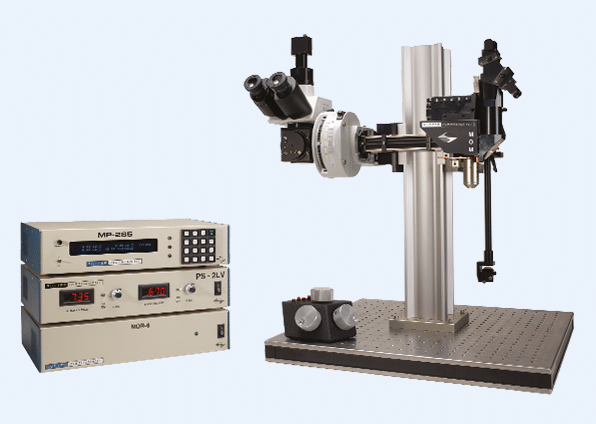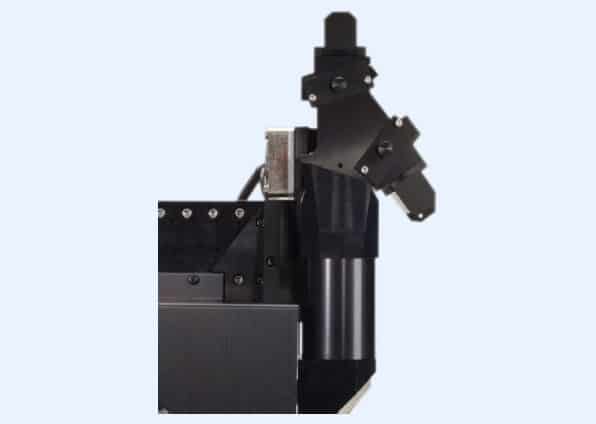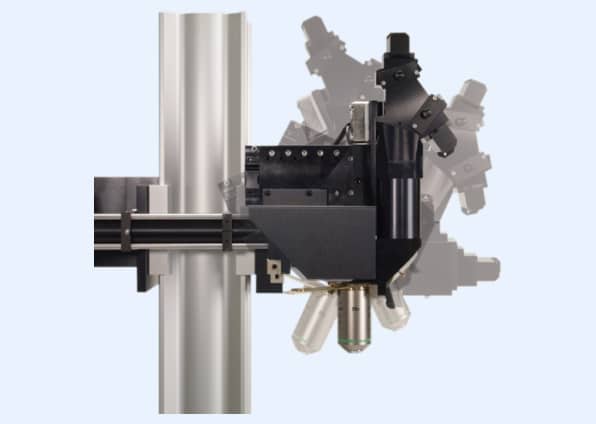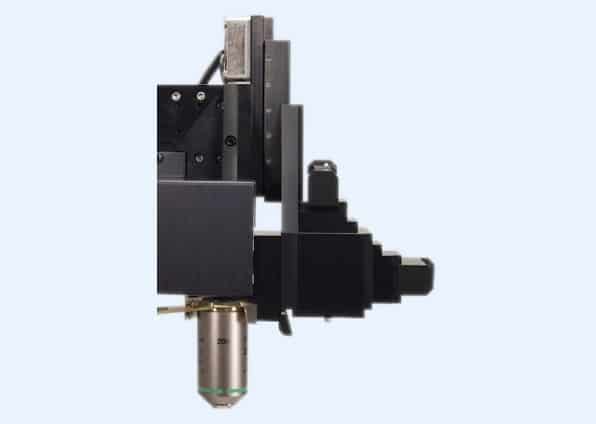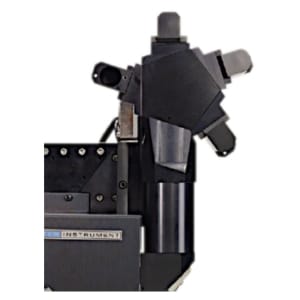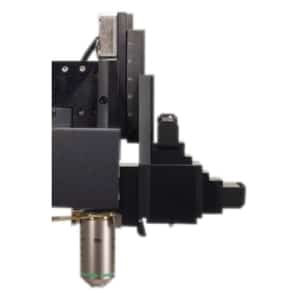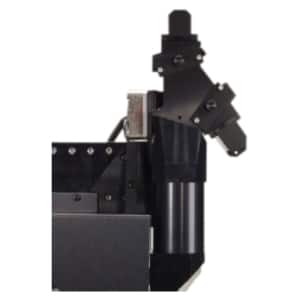MOM
Movable Objective Microscope
Sutter Instrument
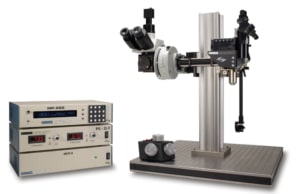
The Movable Objective Microscope® (MOM®) is a two-photon microscope capable of imaging deep within living specimens when combined with a Ti:Sapphire Laser. The MOM design is unique in providing three-dimensional objective movement and rotation allowing the specimen to remain stationary. Many highly regarded imaging laboratories around the world use the Sutter MOM and we constantly work with our customers to adapt the design for their changing needs.
Opto-mechanical Design
The MOM consists of two independent microscopes. The wide-field half of the microscope consists of an Olympus vertical illuminator, a LED light source and camera mount to provide standard epifluorescence. The two-photon side of the microscope provides the optical pathway for guiding the excitation laser light from the table up into the scanning mirrors. From there the beam expands through the scan lens and directs into the back of the objective. Following two-photon excitation, the emitted photons are directed into the detection pathway by a dichroic mirror immediately above the objective. The main body of the microscope moves backwards on a rail system allowing easy access to the specimen prior to imaging.
The objective translates in X, Y and Z axes, it additionally rotates around the Y axis. Two moving mirrors allow the microscope to maintain efficient delivery of the excitation light to the back aperture of the objective regardless of movement or orientation. The X, Y and Z movements used are the same as controlled in Sutter’s MP-285 micromanipulator, thus movements are smooth, fine in scale, drift-free and highly reproducible. These movements allow the acquisition of Z-stacks and mosaic images of large regions of tissue without the need for a moving stage.
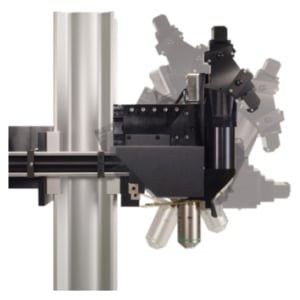
The horizontal light path allows for rotation of the objective away from the standard vertical position. As a result of this rotation, the MOM can easily be converted from an upright to an inverted microscope and the objective positioned from 0 to 180 degrees. This positional freedom permits the imaging of non-horizontal surfaces and volumes.

